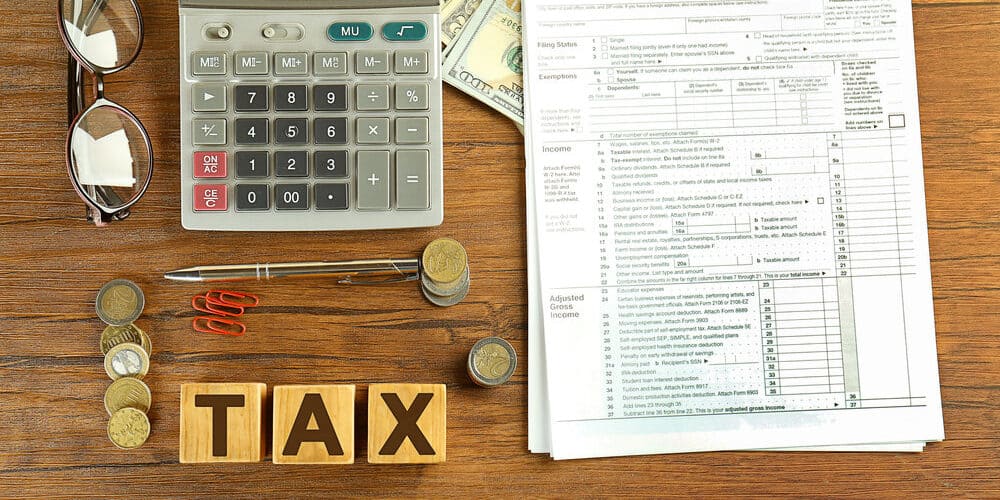
BY
|
The Ultimate Guide to ATO Directors’ Fees (Updated 2024)
Are you feeling uncertain when it comes to paying directors’ fees and being compliant with the ATO? You’re not alone. It’s a question we get asked often – should we pay directors, and if so, how should director fees be paid? Claiming a deduction lowers your overall tax liability, so you’ll want to be clued up on all the rules and procedures.
Directors’ fees can get tricky because you need to follow procedural requirements when paying them. Not only that but there are also tax obligations prescribed by the Australian Tax Office that you need to be aware of if you want to claim directors’ fees as a tax deduction for your business. We’ve broken down everything you need to know.
What Are Director Fees?
Before delving into the rules and procedures, you must understand how directors can be paid. Most commonly, directors are paid either through:
- A salary;
- Directors fees; or
- Dividends
While each payment method compensates the directors for their services, they have different tax implications and compliance procedures.
What Is the Difference Between the Three Methods of Payment?
A Director’s Salary
A director who works in the company is likely to receive a regular salary, just as other company employees are compensated through a salary.
A Director’s Fees
However, the director merely serves as a company director. In that case, they don’t fulfil any employee responsibilities—then they are classified as non-executive directors, and director fees are used to compensate them for their services.
Directors’ fees are only paid if the company’s constitution allows it or if the shareholders have formal approval. The company’s constitution is crucial in specifying the entitlement to director’s fees and ensuring compliance with legal and tax requirements.
While paying a salary or ATO directors’ fees differs in the reason for compensation, they share one similarity: superannuation. Although directors are not technically company employees, the company must make superannuation guarantee contributions on their behalf.
Dividends
Depending on the shareholder agreement, a director can also receive compensation as a dividend. A dividend is a portion of a company’s profit that it pays shareholders in return for their investment.

Directors Fees for Non-Resident Directors
The tax treatment of directors fees can differ for non-resident directors compared to resident directors. Non-resident directors are generally subject to withholding tax on their directors’ fees, which the company must withhold and remit to the ATO.
The tax withheld must be accurately reported on individual tax returns using payment summaries provided by the company. The withholding tax rate depends on whether Australia has a tax treaty with the director’s country of residence.
When are Directors Fees Assessable for Tax Purposes?
Directors’ fees are generally assessable income in the financial year they are received. However, suppose the company passes a resolution before year-end to pay directors’ fees relating to that year. In that case, the fees can be claimed as a tax deduction from the ATO in that year, even if they are physically paid after year-end. The Income Tax Assessment Act 1997, provisions directly impact individuals carrying out the role of company director.
Are Directors Fees Subject to GST?
Directors’ fees are generally not subject to GST, as they are not considered a taxable supply. However, if the director is being paid through a company or trust, that entity may need to charge GST on the fees if it is registered or required to be registered for GST.
Directors Fees vs Management Fees – What’s the Difference?
It’s important to distinguish between directors’ fees and management fees. Directors’ fees compensate directors for their services as members of the board. On the other hand, management fees are paid to a company or trust for providing managerial services to the business. Management fees have different tax implications than directors’ fees.
How to Report Directors’ Fees on Your Tax Return
Directors’ fees must be reported in the company tax return in the year they are paid or accrued. The fees are shown as an expense which reduces the company’s taxable income. The individual directors must also include the fees in their tax returns as assessable income.
When the ATO audits a company, they’ll consider all areas of tax compliance for company directors, including:
- PAYG withholding
- Fringe benefits tax
- Payroll tax
- Superannuation guarantee contributions
If your company constitution or shareholder agreement provides approval for directors to receive directors’ fees, you’ll need to comply with the following directors’ fees ATO requirements.
PAYG Withholding
When you pay employees, individual contractors and other businesses, you must withhold an amount from the payment and send it to the ATO. This is called PAYG withholding.
PAYG withholding aims to prevent employees from paying a significant amount of tax at the end of the financial year. Much like how you would withhold PAYG tax on regular employee salary payments, you have to withhold PAYG tax from the gross directors’ fees paid.
Regarding your company’s reporting requirements, you must also report your directors’ fees PAYG withholding on your business activity statement (BAS). Your company is similarly required to issue a payment summary to each director. Think of it like a payslip. It must indicate how much you paid your directors’ fees for that financial year and how much you withheld from these payments.
PAYG withholding and reporting is a vital compliance obligation if you want to claim these payments as tax deductions.
Fringe Benefits Tax (FBT)
A fringe benefit is a remuneration paid to the employee (or their associate) in addition to their salary or, in this case, directors’ fees. If fringe benefits were provided to directors during the financial year, they must be captured in the annual FBT tax return.
Fringe benefits include, but are not limited to:
- Providing a director with an interest-free loan
- Allowing a director to use a work vehicle for their private purposes
- Reimbursing a director for their children’s school fees
- Paying a director’s health insurance
- Paying for entertainment packages such as hosting a Christmas party for the directors, employees and their partners
For more on FBT, check out our ultimate guide on fringe benefits tax!
Should Your Directors’ Fees Be Captured for Payroll Tax Purposes?
Although directors’ fees differ from salaries, they’re still subject to payroll tax obligations. So, yes, to be ATO compliant, your directors’ fees must be recorded for payroll tax purposes. It’s worth noting that your directors should also be covered for WorkCover insurance purposes.
Superannuation Guarantee Contributions
Directors’ fees fall within the definition of ordinary times earnings, so a superannuation guarantee is applicable. All directors’ fees are subject to superannuation guarantees, and payments (10.5% of their gross directors’ fees from 1 July 2022) must be made to complying super funds or retirement savings accounts.

How Directors’ Fees & ATO Tax Deductions Work
Directors fees are treated as a tax-deductible business expense in the year they are paid. However, the ATO does make provisions if the company intends to pay directors’ fees in that financial year. So, you can claim a deduction when payments are accrued before they’re paid out.
Given that every cent counts in the current distressed market, this could be a cashflow advantage. Your company board must pass a formal Board resolution to pay directors fees. If the resolution is passed in the current financial year, you can claim the tax deduction even if the directors’ fees aren’t paid by the end of that financial year.
What Happens If You’re Non-Compliant?
On 1 July 2019, ATO introduced new rules that affect whether or not you can claim tax deductions for payments made to directors, employees and contractors. Directors’ fee payments are only compliant if you have withheld PAYG amounts or reported them as required.
The consequence of non-compliance: you can’t claim a tax deduction! So, to claim a tax deduction for your paid directors’ fees, you must ensure you’re compliant with all the ATO tax requirements, including:
- Withholding PAYG
- Capturing FBT
- Preparing the payroll for the director fees
- Superannuation
- Filing to the ATO as per the single-touch payroll rules
Key Takeaways
Have you recently considered your directors’ fees ATO obligations? Various compliance points need to be considered concerning paying directors’ fees if you want to claim tax deductions on your business’s expenses and ultimately minimise your tax liability.
Consider the following questions:
- Are you withholding PAYG withholding from the directors’ fees?
- Are you issuing an employment payment summary?
- Is your company capturing benefits provided to Directors in the annual fringe benefits tax return?
- Are you making the relevant superannuation guarantee contributions on behalf of your directors?
If you’re unsure whether your company complies with the directors’ fees ATO requirements, consider speaking to tax professionals. At Box Advisory Services, our small team of experienced accountants can help you navigate through paying your directors’ fees and being ATO compliant.
Book a free consultation to assess your situation and learn how we can help you.



